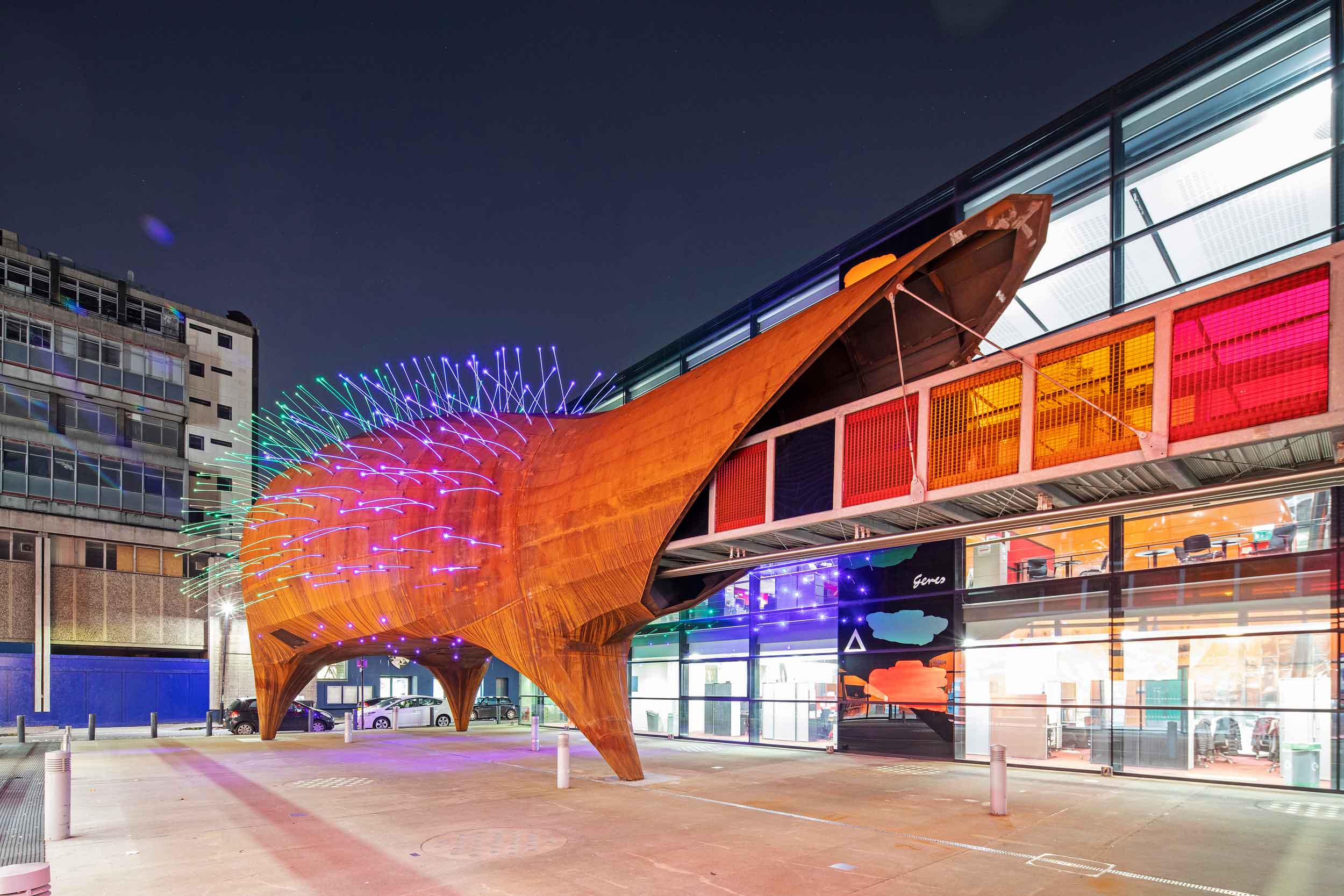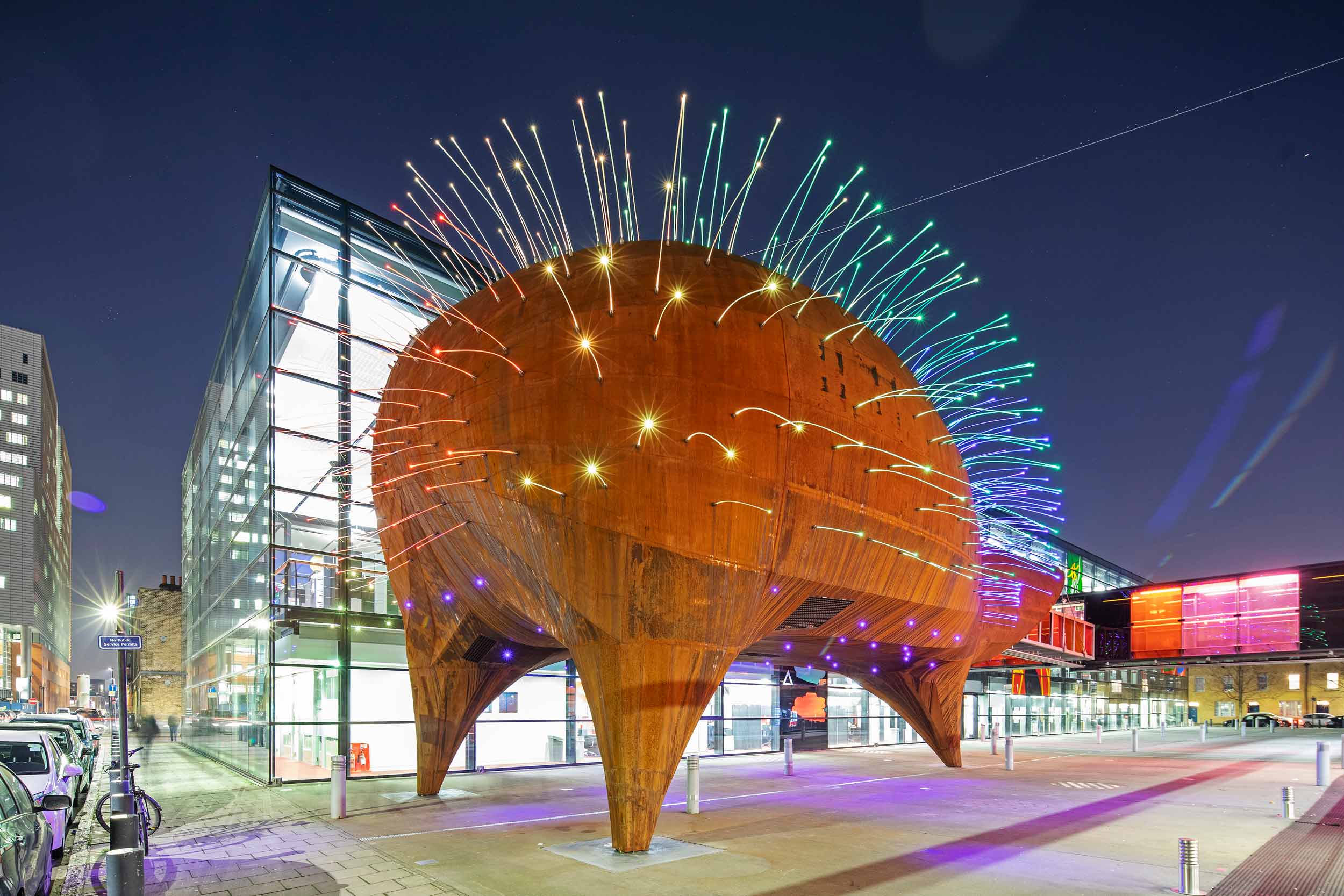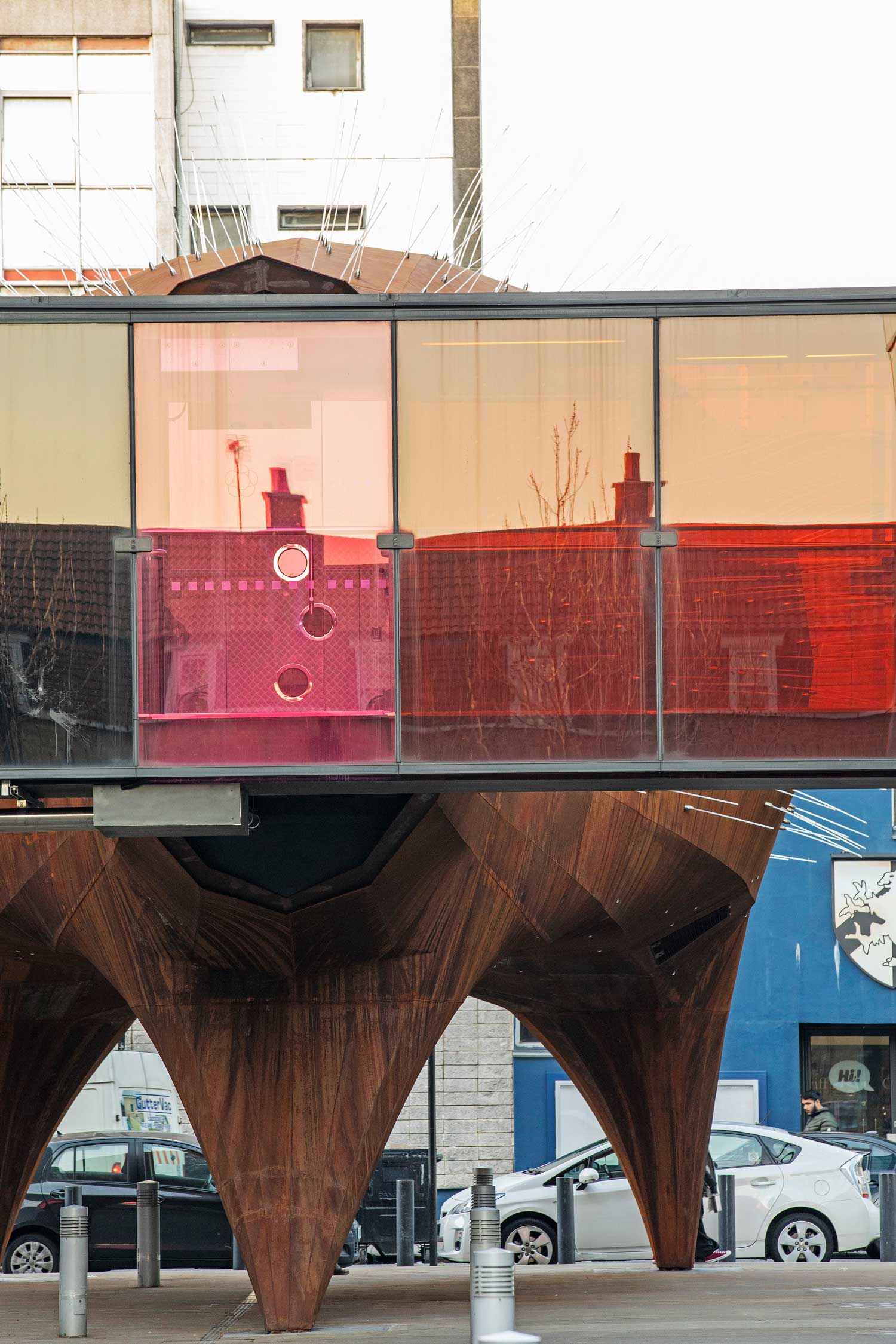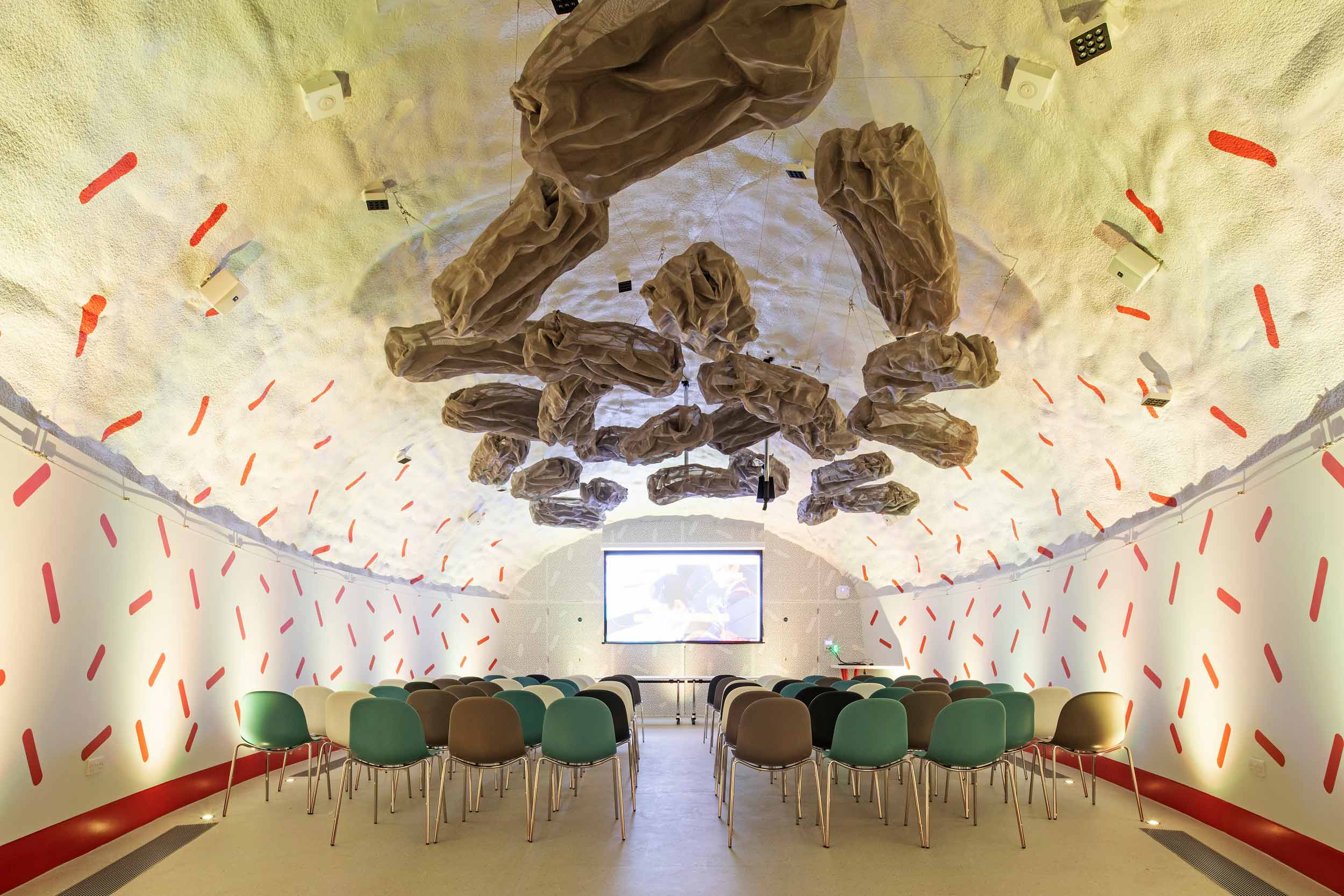
Due to the positive response it has received, Queen Mary University of London has expanded its Centre of the Cell with a new free-standing pod within mews space on its campus. The Neuron Pod is a multi-functional space for educational workshops, experiments, shows, exhibitions and more.
A nerve cell-inspired monocoque steel pod with fibre optic hairs for Queen Mary University of London.
Having previously worked on the award-winning Blizard Building, beside which the pod will be located, and the Innovation Centre for the client, we were tasked to create a new pod to join those already existing on site, whilst taking into consideration that it will be situated above basement labs. This means that the pod was limited to a maximum weight of 25 tonnes to ensure that no strengthening is required.

Based on the concept of a neuron cell, the two-storey pod is a monocoque steel structure on an elevated tripod, preserving the public route through the mews and allowing it to sit upon existing structural points in the basement. Its cladding comprises 6 mm weathering steel sheets, whilst the legs and underbelly have a Glass Flake Epoxy finish.
The panels were designed and modelled in 3D software and fabricated using HD plasma cutting and 3D forming machines, creating 12 m-long curved strips of steel, similar to that of a zeppelin. Having been prefabricated in pieces, the pod was craned onto site and assembled with mechanical fixings, all within a relatively short space of time.
In keeping with the neuron concept, the pod is covered in fibre optic ‘hairs’ that light up at night. These are mechanically connected via threaded stainless steel bosses with watertight glands.
2019 Structural Steel Design Awards – Commendation



The Neuron Pod is unique in both its architectural and structural design. Watch the story behind the creation of this ‘unusual’ addition to Queen Mary University of London’s Whitechapel campus.
Watch the story behind the design